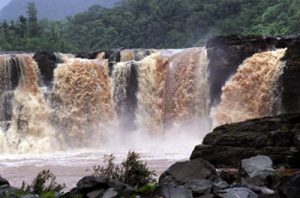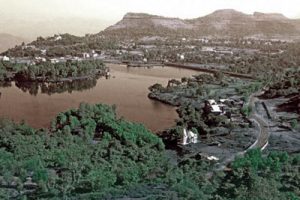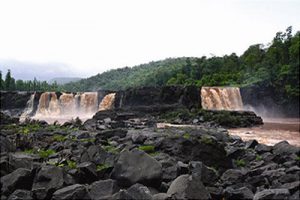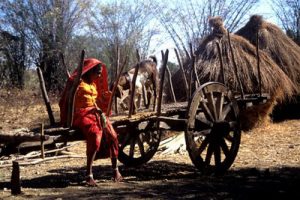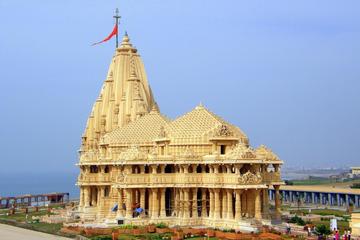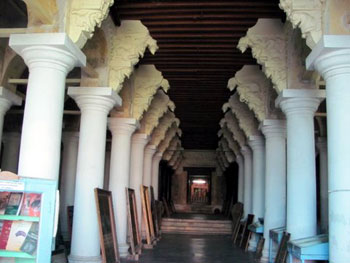
Ramanathapuram, South India
by Preena Deepak Samuel
Kings and castles may seem to belong to a forgotten era. Yet I have always been keen on exploring old forts and ruined palaces. When I moved into the quaint town of Ramanathapuram in South India, an old palace that silently adorns the market square was the first landmark to catch my attention. This keepsake belonging to the Sethupathy Kings lured me and I soon made a visit to take a look at the treasures within its aging walls and get acquainted with an ancient dynasty. The descendants of the Sethupathy Kings had handed over the palace, its adjoining grounds and artifacts to the care and control of the State’s Archaeological Department years ago.
I was excited to walk through the magnificent archway leading into the palace. This old structure had elaborately constructed rooms, look out posts and balconies. Safety was of prime importance to the monarch ‘Kizhavan Sethupathy’ who constructed the palace. Consequently he installed 44 cannons around the palace, not to forget the strategically placed guard posts and watch towers. During its glory days, there was also a huge trench of water around the palace that acted as a barricade to keep away intruders. Most of these reinforcements were completely demolished by British invaders in later years.
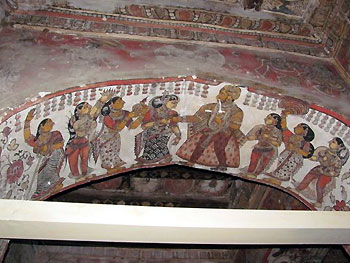 The palace gates opened into extensive grounds with the remains of a once beautiful fountain straight ahead. Beyond this was ‘Ramalinga Vilasam’, the grand abode of the Sethupathy Kings who ruled almost one fifth of Tamil Nadu, South India from 1601 to 1948 AD. A temple built by the Kings of this empire in honor of their family deities can be seen on the southern side and still functions as a place of worship. Ascending several stone steps, I entered the royal dwelling. A small section on the right has been converted into a ticket counter and paying a small fee, I commenced a tour of this fort.
The palace gates opened into extensive grounds with the remains of a once beautiful fountain straight ahead. Beyond this was ‘Ramalinga Vilasam’, the grand abode of the Sethupathy Kings who ruled almost one fifth of Tamil Nadu, South India from 1601 to 1948 AD. A temple built by the Kings of this empire in honor of their family deities can be seen on the southern side and still functions as a place of worship. Ascending several stone steps, I entered the royal dwelling. A small section on the right has been converted into a ticket counter and paying a small fee, I commenced a tour of this fort.
The Durbar Hall, where I stood had two rows of stately pillars which led up to a pedestal. In former days, the King and his council of ministers met on a day to day basis in this Hall with the royal throne set up on the pedestal. Though deprived of the seat of honor, the pedestal stood distinctly prominent. Full length portraits of Sethupathy rulers are now on display on all the pillars leading up to the pedestal, as if to welcome visitors to take a look at their majestic lives. Standing at the entrance of the dark and damp Durbar Hall, my imagination conjured scenes of royal conventions that must have taken place at this spot through the centuries. Incidentally, this Hall also witnessed the historically significant confrontation between Veerapandiakattaboman (a South Indian King of a neighboring province) and the British Official, Jackson.
 The biggest merit not just to the Durbar Hall but the entire palace is the murals that span across every inch of the walls and ceiling. These indelible prints have braved the ravages of time and stand a colorful reminder of the life of the Sethupathy Kings. They narrate stories of love and war, courage and devotion. The walls of the Durbar Hall portray the King’s war triumphs among others. Several relics from the past are on display in this Hall. Pieces of armory like swords, spears, daggers, rifles and knives which have rusted in time and deprived of use have been showcased as a reminder of the Kings’ valor and bravery.
The biggest merit not just to the Durbar Hall but the entire palace is the murals that span across every inch of the walls and ceiling. These indelible prints have braved the ravages of time and stand a colorful reminder of the life of the Sethupathy Kings. They narrate stories of love and war, courage and devotion. The walls of the Durbar Hall portray the King’s war triumphs among others. Several relics from the past are on display in this Hall. Pieces of armory like swords, spears, daggers, rifles and knives which have rusted in time and deprived of use have been showcased as a reminder of the Kings’ valor and bravery.
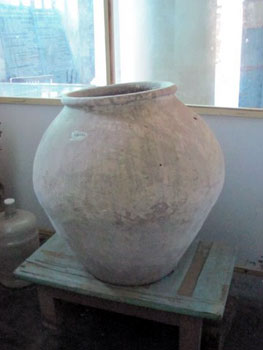 The Durbar Hall also houses antiques that bring to light the strange customs and practices that were in vogue during the reign of the Sethupathy Kings. I was fascinated by a gigantic stone ball that weighed a ton and a massive mud pot. The purpose of the stone ball was to test the strength of a prospective groom in days gone by. Only those young men who could fling the mammoth ball over their shoulders qualified for wedlock. An impossible feat for grooms of today! The mud pot or ‘Mugavai Thali’ on the other hand is a reminder of the gruesome ancient practice of burying the aged alive when care became impossible. I shuddered looking at the harmless mud pot which was actually a coffin from the past!
The Durbar Hall also houses antiques that bring to light the strange customs and practices that were in vogue during the reign of the Sethupathy Kings. I was fascinated by a gigantic stone ball that weighed a ton and a massive mud pot. The purpose of the stone ball was to test the strength of a prospective groom in days gone by. Only those young men who could fling the mammoth ball over their shoulders qualified for wedlock. An impossible feat for grooms of today! The mud pot or ‘Mugavai Thali’ on the other hand is a reminder of the gruesome ancient practice of burying the aged alive when care became impossible. I shuddered looking at the harmless mud pot which was actually a coffin from the past!
A carefully preserved three dimensional picture was the next to capture my attention. The first time I saw this frame, I passed by not thinking much of the blurred image of an elephant. However, only when the curator asked me to look at the picture from the left and right, did I unearth the secret of the image which magically transformed into a tiger and then into a lion. The skills of the artisans of this old kingdom mesmerized me. On the southern end of the Durbar Hall, I found the ‘Abisheka Peedam’ or seat of anointment where the King and his Officials were appointed for their sacred duties. Examining the exhibits of royal seals, palm leaves and steel plates engraved with ancient writings, numerous sculptures and black and white pictures, I completed my trip of this elegant Hall.
 The Sethupathy Kings are renowned for their religious fervor and this can easily be seen from the mural depictions and the prominence to deities just beyond the Durbar Hall. The walls of the sanctum here mostly talk about Hindu scriptures and the King’s zeal in adhering to them. Though serene in its settings, this hall holds a secret that can easily escape the naked eye. Hidden behind the deities is a secret escape route that was elaborately constructed to lead into seven South Indian temples. Though the tunnel tingled a sense of adventure and evoked my curiosity to look in, this was impossible as much of the passage had caved in.
The Sethupathy Kings are renowned for their religious fervor and this can easily be seen from the mural depictions and the prominence to deities just beyond the Durbar Hall. The walls of the sanctum here mostly talk about Hindu scriptures and the King’s zeal in adhering to them. Though serene in its settings, this hall holds a secret that can easily escape the naked eye. Hidden behind the deities is a secret escape route that was elaborately constructed to lead into seven South Indian temples. Though the tunnel tingled a sense of adventure and evoked my curiosity to look in, this was impossible as much of the passage had caved in.
This seemed to be the end of ‘Ramalinga Vilasam’ but I was surprised when the curator brought out a bunch of keys and led me to the Northern corner of the sacred Hall. Here I found camouflaged stairs that led into the personal dwelling of the King. The narrow stairs opened into another grand Hall with several rows of pillars and innumerable murals depicting the lifestyle of the Sethupathy rulers. Hidden among floral patterns, scenes of the King reposing and dining with his wife and concubines and pictures of dancing damsels are depicted in the frescoes on the walls of this Hall. It is believed that the Sethupathy Kings had as many as 40 concubines. Adjoining this hall is a wide terrace with two guard posts.
From the King’s personal apartment, another staircase leads on to the level above. I was delighted to note that a palace built in the 16th century actually had two levels. The second level revealed the King’s look out post with a huge stone throne. The Sethupathy Kings spent their evenings here, scouting their empire from this pedestal, looking for possible signs of invasions. From this vantage point, the entire town of Ramnathapuram is visible. It was indeed a treat to sit on the stone throne and feel the pulse of an anxious king, eager to protect his kingdom. The rear side of the palace can be seen from here and the vast stretch of palace grounds behind ‘Ramalinga Vilasam’ took me by surprise. There were several ruined rooms built in the same architectural pattern as the palace. I learnt that these rooms were the living quarters of the King’s many concubines.
My visit to ‘Ramalinga Vilasam’ which ended here was full of surprising discoveries. Understanding the customs and rituals of the Sethupathy Kings was a memorable experience. This fort is a treasure chest not just for Historians or Archaeologists, but even for a lay person who will find himself enwrapped by the wonders of ancient architecture, lifestyle and heirlooms. The size and splendor of this colossal structure can never be understood by a casual glance. However for those who dare to venture beyond the enormous archway of the palace, ‘Ramalinga Vilasam’ unfolds itself in whimsical grandeur.
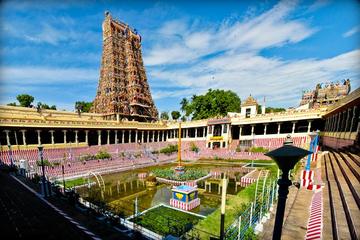
Athens of the East, A day Spend Touring Madurai
If You Go:
www.ramanathapuram.nic.in
www.mapsofindia.com
www.ramnadinfo.com
www.world66.com
www.tnarch.gov.in
Package tour operators:
www.cleartrip.com
www.makemytrip.com
About the author:
Preena Deepak Samuel enjoys exploring the history behind ruined forts and ancient palaces along with her family. She worked as a content writer before deciding to pursue her dream of freelancing. Preena finds time away from work to read, write poems, travel and cook. Her blog is at: http://www.justwhatisay.wordpress.com
All photos are by Preena Deepak Samuel.

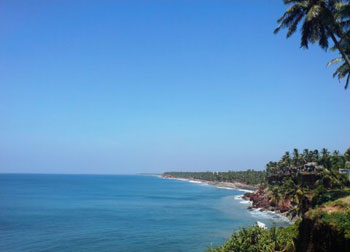
 The auto rickshaws will drop you near the helipad from where you can see the clear blue sea. The south cliff is towards the left where you have a couple of resorts. However all action happens on the north cliff which is towards the right of helipad. I would recommend that any tourist who visits here should head for the north cliff rather than the south cliff in order to be in the middle of the action.
The auto rickshaws will drop you near the helipad from where you can see the clear blue sea. The south cliff is towards the left where you have a couple of resorts. However all action happens on the north cliff which is towards the right of helipad. I would recommend that any tourist who visits here should head for the north cliff rather than the south cliff in order to be in the middle of the action.
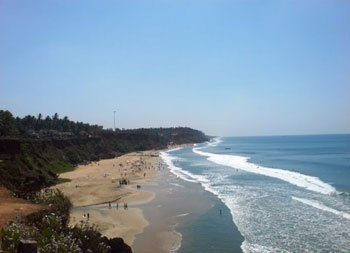 Do not expect the markets to shut down with the sunset as the night life is simply amazing and it goes on till midnight (Bengaluru needs to learn a thing or two from Varkala). All the shops remain open and the restaurants display their fresh catch for the day to lure the tourists in the evenings.
Do not expect the markets to shut down with the sunset as the night life is simply amazing and it goes on till midnight (Bengaluru needs to learn a thing or two from Varkala). All the shops remain open and the restaurants display their fresh catch for the day to lure the tourists in the evenings. Rarely do you find a cliff next to a beach, but, Varkala is where you can say, YES…its right here. From the top of the cliff steps take you down to the clear blue waters. Must appreciate the authorities for the way they have maintained the beach. It is the most well kept beach that I have ever been to. The waters are not very deep for about 100 meters. However the tides are quite strong. The tourists frolic the beach from the morning. I found people doing yoga, practicing karate, taking a sun bath, jogging etc. I actually found many just playing with the tides the whole day. With safe guards always roaming around tourists found it all the more safe.
Rarely do you find a cliff next to a beach, but, Varkala is where you can say, YES…its right here. From the top of the cliff steps take you down to the clear blue waters. Must appreciate the authorities for the way they have maintained the beach. It is the most well kept beach that I have ever been to. The waters are not very deep for about 100 meters. However the tides are quite strong. The tourists frolic the beach from the morning. I found people doing yoga, practicing karate, taking a sun bath, jogging etc. I actually found many just playing with the tides the whole day. With safe guards always roaming around tourists found it all the more safe.
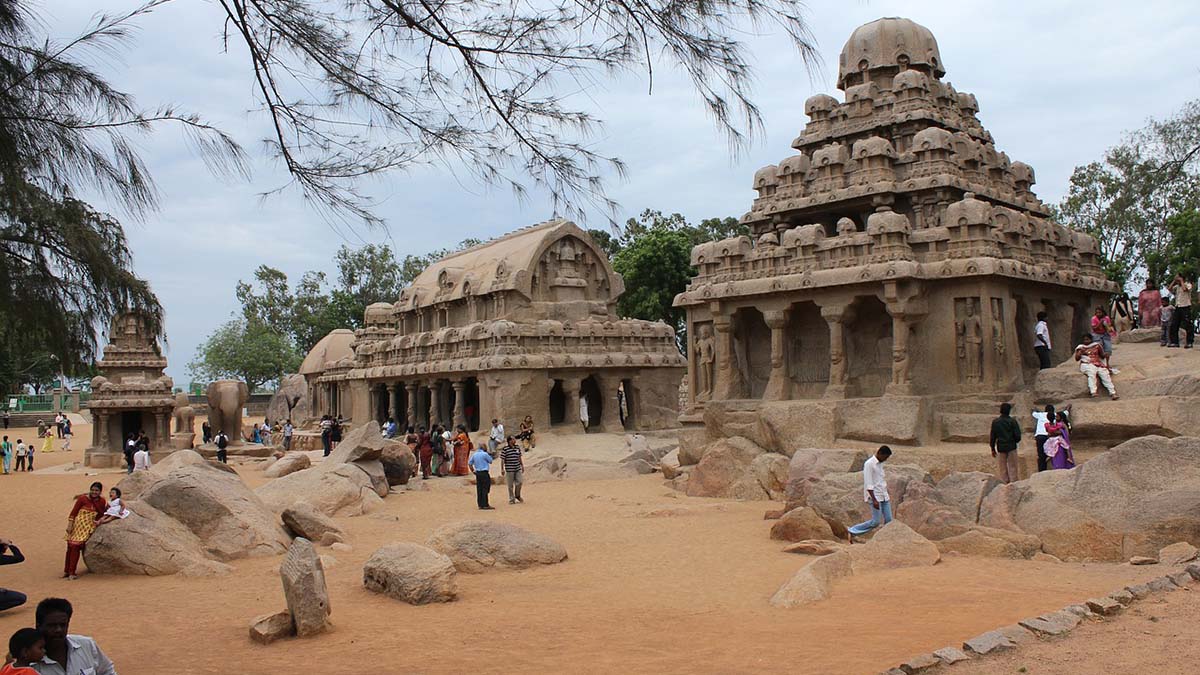
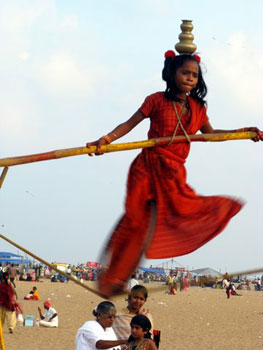 As my husband Rick and I plod through the soft sand, Coney Island comes to mind. Smiling tots bob up and down on carousels and youths shriek from wildly-whirling contraptions, horses gallop by with riders, and kites fill the sky. Most amazing are the girls aged between six and ten performing daring feats on tightropes affixed to crossed bamboo poles lodged in the sand. Snack food is sold out of tents and stalls, some with gaudy plastic stools out front for customers. We agree this is our most exhilarating beach walk to date.
As my husband Rick and I plod through the soft sand, Coney Island comes to mind. Smiling tots bob up and down on carousels and youths shriek from wildly-whirling contraptions, horses gallop by with riders, and kites fill the sky. Most amazing are the girls aged between six and ten performing daring feats on tightropes affixed to crossed bamboo poles lodged in the sand. Snack food is sold out of tents and stalls, some with gaudy plastic stools out front for customers. We agree this is our most exhilarating beach walk to date. St. Thomas (San Thome) Basilica (built in 1504, and rebuilt in 1893) is renowned for its neogothic elegance, and for an underground chapel where I stand riveted at the thought of “doubting Thomas”, one of the twelve Apostles of Christ being buried here. This is one of three churches in the world proclaimed to be built over the tomb of an Apostle (the others being St. Peter’s Basilica in Rome, and Cathedral of Santiago de Compostela built over the tomb of St. James in Spain).
St. Thomas (San Thome) Basilica (built in 1504, and rebuilt in 1893) is renowned for its neogothic elegance, and for an underground chapel where I stand riveted at the thought of “doubting Thomas”, one of the twelve Apostles of Christ being buried here. This is one of three churches in the world proclaimed to be built over the tomb of an Apostle (the others being St. Peter’s Basilica in Rome, and Cathedral of Santiago de Compostela built over the tomb of St. James in Spain).
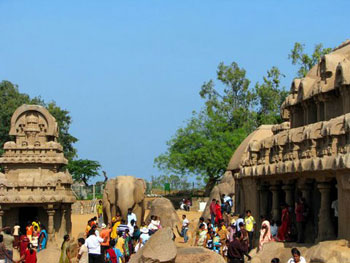 Dharma leads us to the 12m high and 30m wide exquisite bas relief known as Arjuna’s Penance. Dharma points out the key figure saying, “Arjuna is balanced on one leg with arms upraised in ‘penance’, which in the Hindu religion does not mean repentance, but rather a gaining of power over the gods.” Arjuna’s motive was to garner the sword from the towering figure of Shiva beside him, with which to kill his enemies. Our imaginations soar as our eyes scan the 100 sculptured forms surrounding the central figures, depicting lesser gods, humans, flying creatures, and animals, including two life-sized elephants.
Dharma leads us to the 12m high and 30m wide exquisite bas relief known as Arjuna’s Penance. Dharma points out the key figure saying, “Arjuna is balanced on one leg with arms upraised in ‘penance’, which in the Hindu religion does not mean repentance, but rather a gaining of power over the gods.” Arjuna’s motive was to garner the sword from the towering figure of Shiva beside him, with which to kill his enemies. Our imaginations soar as our eyes scan the 100 sculptured forms surrounding the central figures, depicting lesser gods, humans, flying creatures, and animals, including two life-sized elephants.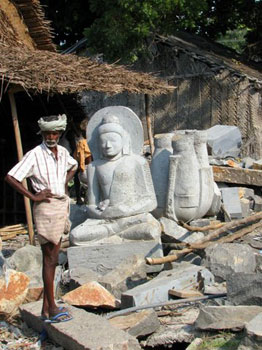 Over a thousand years later, the tapping of hammer and chisel continues along the dusty streets of this village renowned for its stone carving. We become absorbed watching artisans chip granite blocks into animal forms and gods destined for temples around the world.
Over a thousand years later, the tapping of hammer and chisel continues along the dusty streets of this village renowned for its stone carving. We become absorbed watching artisans chip granite blocks into animal forms and gods destined for temples around the world. Another Kanchipuram stop was to a family silk weaving factory where some of the most astoundingly beautiful wedding saris are made with vividly coloured silk threads, the borders spun with gold and silver strands, and costing up to 50,000 Rupees ($1,190) – expensive for the country’s economy. Eighty percent of the city’s population is involved in the silk industry.
Another Kanchipuram stop was to a family silk weaving factory where some of the most astoundingly beautiful wedding saris are made with vividly coloured silk threads, the borders spun with gold and silver strands, and costing up to 50,000 Rupees ($1,190) – expensive for the country’s economy. Eighty percent of the city’s population is involved in the silk industry. Just over the border from Puducherry is Auroville, the brainchild of “the Mother”, whose work has been carried on by her followers. Although there is minimal tourist access of the facility, a visitor centre provides information on the workings of this international community that is spread over 20 sq km, with about 2,000 residents from around 38 nations. It is a place to live in peace and unity – above all creeds, politics, and nationalities. The focal point of Auroville is a gigantic gold-plated globe called the Matrimandir, which contains a crystal that diffuses sunlight into 26 meditation chambers for use by its members.
Just over the border from Puducherry is Auroville, the brainchild of “the Mother”, whose work has been carried on by her followers. Although there is minimal tourist access of the facility, a visitor centre provides information on the workings of this international community that is spread over 20 sq km, with about 2,000 residents from around 38 nations. It is a place to live in peace and unity – above all creeds, politics, and nationalities. The focal point of Auroville is a gigantic gold-plated globe called the Matrimandir, which contains a crystal that diffuses sunlight into 26 meditation chambers for use by its members.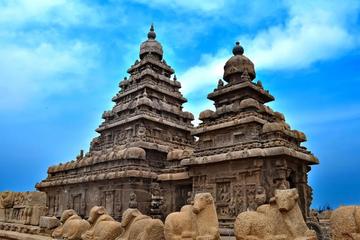

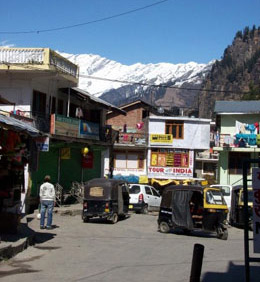 I booked myself onto an overnight bus, barely sleeping through a cold night on winding roads, waiting for the dawn to break. When it did, I watched us pass through villages and market towns, women hurrying through the morning wrapped in thick shawls, men drinking steaming tea at roadside shops, children bright-faced with cold and smiling, all backed by green slopes and snowy peaks. This India looked very different to the hot plains I knew.
I booked myself onto an overnight bus, barely sleeping through a cold night on winding roads, waiting for the dawn to break. When it did, I watched us pass through villages and market towns, women hurrying through the morning wrapped in thick shawls, men drinking steaming tea at roadside shops, children bright-faced with cold and smiling, all backed by green slopes and snowy peaks. This India looked very different to the hot plains I knew.
 “Is there snow in Solang?” I asked.
“Is there snow in Solang?” I asked. The summer capital of the British Raj, Shimla is strung out along a high, green ridge, overlooking deep valleys covered in trees. Its streets are stepped like rice terraces, connected by steep staircases. The buildings are all oddly familiar in Shimla – bay-windowed houses with chimneys and pointed roofs, the Raj’s version of home, tumbling down the mountainside. There are two Shimlas – the Indian town, a steep warren of shops and stalls, and the European town, with broad buildings spread out around a wide boulevard, and into the trees on the edge of town.
The summer capital of the British Raj, Shimla is strung out along a high, green ridge, overlooking deep valleys covered in trees. Its streets are stepped like rice terraces, connected by steep staircases. The buildings are all oddly familiar in Shimla – bay-windowed houses with chimneys and pointed roofs, the Raj’s version of home, tumbling down the mountainside. There are two Shimlas – the Indian town, a steep warren of shops and stalls, and the European town, with broad buildings spread out around a wide boulevard, and into the trees on the edge of town.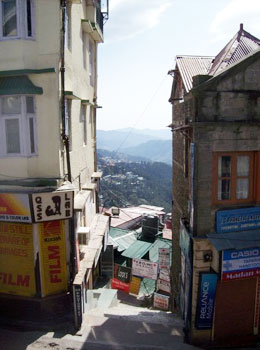 Having had my fill of Shimla’s ghostliness, I got another bus to Dharamsala, home of the Dalai Lama. Dharamsala itself is a bustling but unremarkable mountain town, but above it is McLeod Ganj, seat of the Tibetan government, and with a population of mostly Tibetan refugees and western tourists. Many of them come to take Buddhist meditation classes, or to hear one of the Dalai Lama’s teachings. I came to eat Tibetan food, try out the hospitality in Tibetan bars, and gaze at the views over the valley, of rocky villages and strings of colourful Buddhist prayer flags.
Having had my fill of Shimla’s ghostliness, I got another bus to Dharamsala, home of the Dalai Lama. Dharamsala itself is a bustling but unremarkable mountain town, but above it is McLeod Ganj, seat of the Tibetan government, and with a population of mostly Tibetan refugees and western tourists. Many of them come to take Buddhist meditation classes, or to hear one of the Dalai Lama’s teachings. I came to eat Tibetan food, try out the hospitality in Tibetan bars, and gaze at the views over the valley, of rocky villages and strings of colourful Buddhist prayer flags.
